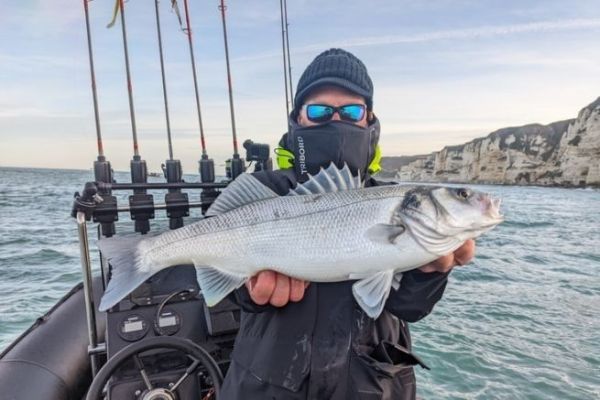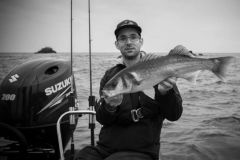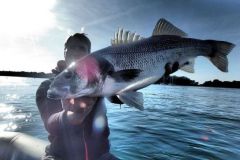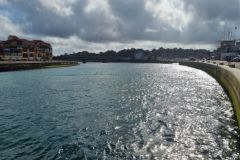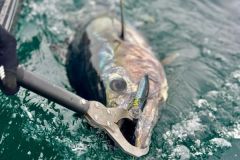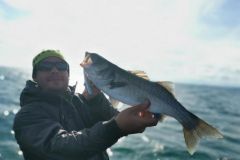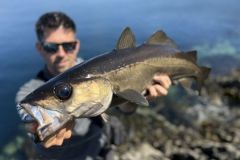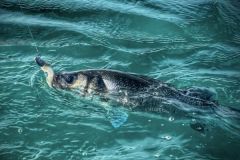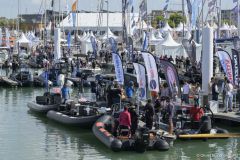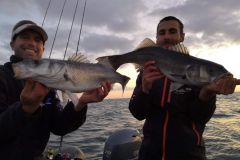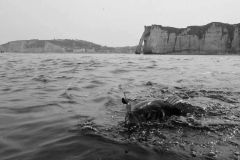Understanding spring sea bass fishing
Spring marks the start of the bass fishing season, a time when weather conditions and fish behavior combine to offer unique opportunities for anglers. Water temperatures begin to rise, prompting bass to move to coastal areas to feed and reproduce.
The best types of zones
High-current zones
- Rocky bottoms: Areas with rocky bottoms and strong currents are ideal for bass fishing. Bass like to hide behind rocks to hunt their prey.
- Points of convergence: The points where currents meet attract numerous fish, including sea bass, which come to feed on the small fish and crustaceans present in these areas.
Strong currents bring large quantities of food, attracting hungry sea bass.
Rocky bottoms provide natural hiding places for sea bass, increasing your chances of catching them.
These spots often have eddy zones where sea bass can hold on without too much effort in the face of the current.
Artificial structure zones
- Bridges and dykes: Artificial structures such as bridges, dykes and wrecks attract sea bass for protection and hunting.
- Steeply sloping areas: These areas offer depth variations that create diverse habitats for sea bass.
Artificial structures serve as shelters for sea bass and attract a wide range of prey.
Variations in depth allow sea bass to move around easily to hunt while protecting themselves from prevailing currents.
Seagrass and mudflat areas
- Seagrass beds: Seagrass beds are home to a wide variety of small fish and crustaceans, attracting sea bass who come here to feed.
- Mudflats: Nutrient-rich mudflats attract many species of fish, including sea bass.
Seagrass beds and mudflats are nursery areas for many species, offering an abundance of food for sea bass.
These areas are often shallower, making them easier to fish on a rising or falling tide.
All these spots are teeming with the first egg hatchlings of all species. All easy prey to hunt in still-cold waters.
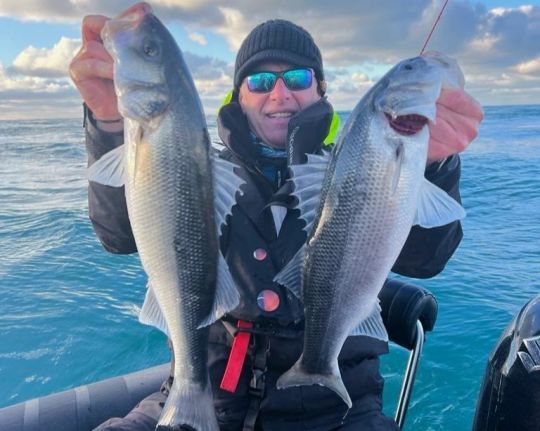
Tips for spring bass fishing
Recommended equipment
To fish for sea bass in spring, use a casting rod from 2.40 m (boat) to 3 m (shore) with a size 2500 or 3000 reel. Use soft lures, swimming fish and surface lures to imitate the natural prey of sea bass on your spots.
Fishing techniques
Scratch and pull fishing are often the most productive, depending on the area. Fish when the tide turns, to take advantage of the peaks of activity of this fish which loves these moments. Use slow, regular patterns at the start of the season to imitate the movements of small fish.
Fishing hours
The best times to fish for sea bass in spring are early morning and late afternoon. Bass are more active during these periods, increasing your chances of catching them. However, don't neglect to warm up the water with a nice spring sun.
Regulations and respect for the environment
In 2025, sea bass fishing is subject to strict rules to preserve populations. North of the 48th parallel, you can catch two sea bass per day per angler in January and from April to December. South of the 48th parallel, the limit is one sea bass per day per angler. Respect the minimum catch size (42 cm) and release unwanted catches with care.
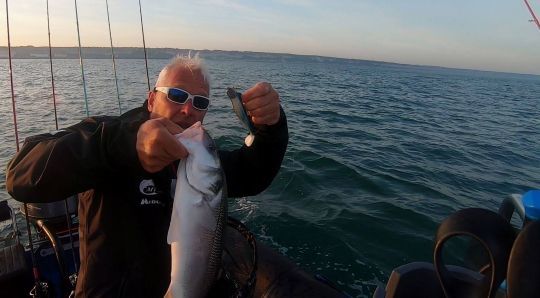
Spring is a great time for bass fishing, offering unique opportunities for anglers. By choosing the right types of areas and using the appropriate techniques, you'll increase your chances of catching them. Don't forget to respect the regulations in force to preserve this emblematic species.
